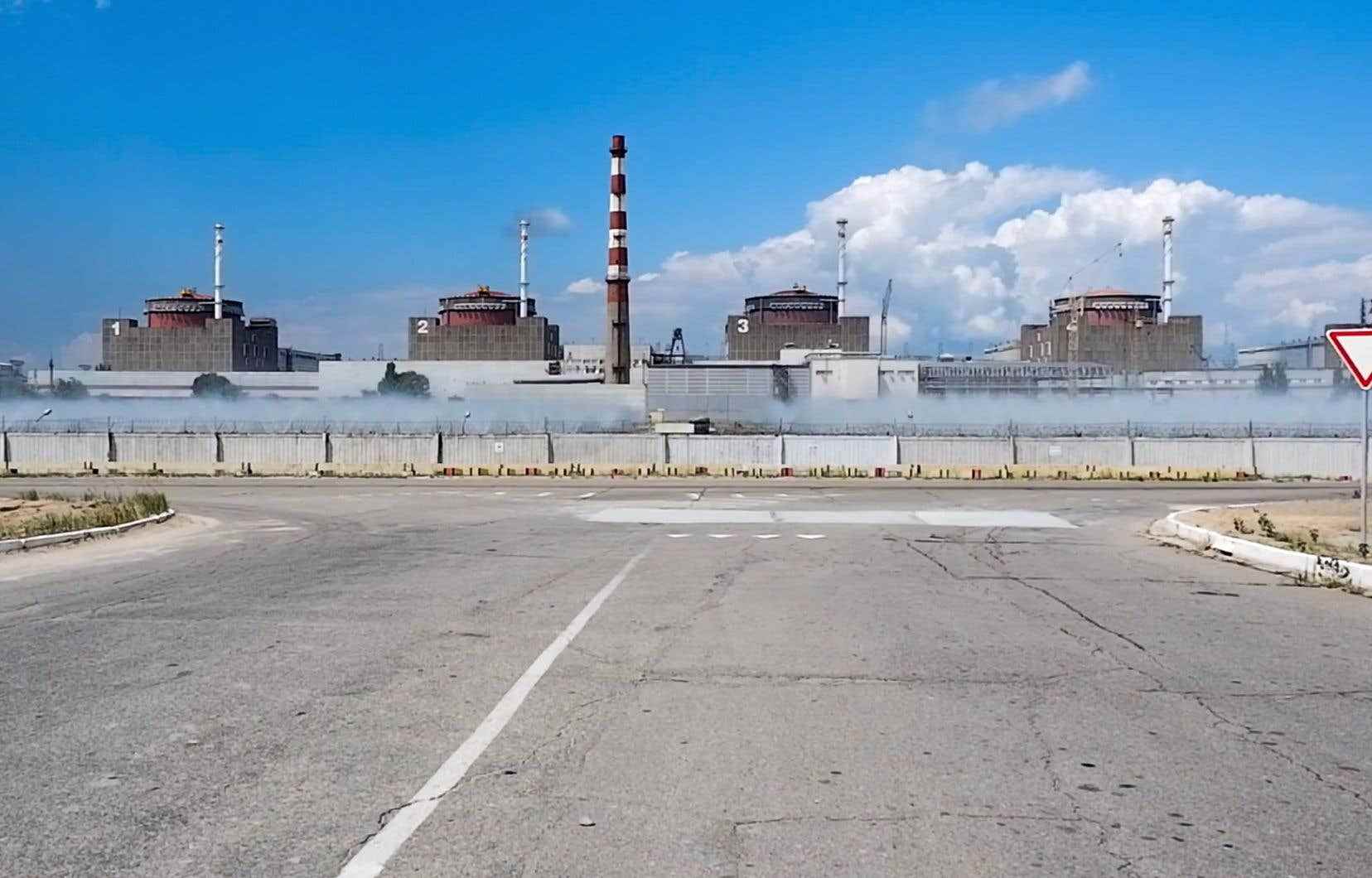The risks around the Zaporizhia nuclear power plant in southern Ukraine, which Moscow and kyiv have accused each other for more than a week of bombing, “increase every day”, the mayor of the city where it was judged on Sunday. is located.
Dmytro Orlov, the mayor of Energodar where the complex is located, denounced by telephone to AFP a “pure and simple nuclear terrorism” of Russia which “can end in an unpredictable way at any time”.
“The risks increase every day […] Mortar fire on the nuclear power plant is carried out every day and night from the occupied villages,” he added. “The situation is serious and the most worrying thing is that there is no de-escalation process,” according to the elected official.
Energodar is, like the plant, occupied since early March by Russian troops. Faithful to kyiv, Dmytro Orlov found refuge in Zaporijjia, the big city of the region.
According to him, Energodar began during the last 24 hours to be bombarded, “which had never happened before” and killed a 45-year-old civilian on Sunday.
“Limit your presence in the streets of Energodar! We have received information about new provocations from the Russian occupiers, Ukrainian nuclear agency Energoatom said on Telegram. “According to the testimonies of the inhabitants, bombardments are again in progress in the direction of the power station […] The interval between the start and the arrival of the shots is 3-5 seconds”.
“Of course, we are worried, because the nuclear power plant is nearby,” says Viktor Shabanin, a 57-year-old resident of the village of Vyshchetarasivka, located on the other bank of the Dnieper opposite the plant. “When the windows explode, the expansive wave often goes in our direction. So we are immediately exposed to radiation, which also spreads through water”.
At the end of the day on Saturday, Ukrainian military intelligence had affirmed that “the occupiers [russes] bomb the power station […] from the village of Vodiané, located in the immediate vicinity, on the right bank of the Dnieper ”, the river which separates the zones in the hands of the Russians from those controlled by the Ukrainians.
One of the strikes damaged a pumping unit and another “resulted in the partial destruction of the fire department responsible for the safety of the nuclear power plant”, according to Ukrainian intelligence, which also accused Russian forces of “preparing provocations under the Ukrainian flag”.
Nuclear “blackmail”
For their part, the occupying authorities installed by Russia in the conquered areas in the Zaporijjia region have accused the Ukrainian forces of being behind the firing.
“Energodar and the Zaporizhia nuclear power plant are again under fire from militants (of Ukrainian President Volodymyr) Zelensky,” a member of the pro-Russian administration, Vladimir Rogov, said on Telegram.
The projectiles fell “in areas located on the banks of the Dnieper and in the power plant”, he said, without reporting any casualties or damage.
The first strikes, on August 5, notably hit a high-voltage power line transformer, causing the automatic shutdown of reactor No. 3 of Europe’s largest nuclear power plant and the start-up of its emergency generators.
On Saturday evening, Ukrainian President Volodymyr Zelensky denounced “Russian blackmail” around the site, accusing Moscow of using the plant as an attack base so that the Ukrainian army could not retaliate and asking for “new sanctions against Russia in order to “block the Russian nuclear industry”.
In his daily address on Sunday, he warned his fellow citizens that “in the near future, the parliament of Ukraine will have to take a decision on the extension of martial law and general mobilization”.
Then, addressing the Russian population, he said: “When evil reaches such proportions, people’s silence is close to complicity […] If you have Russian citizenship and you remain silent, it means you are not fighting, which means you support “the war.
Demilitarization
The bombing of the plant raises fears of a nuclear disaster, which prompted a meeting of the UN Security Council on Thursday.
The Ukrainian authorities, supported by their Western allies, are calling for the demilitarization of the area and the withdrawal of forces from Moscow.
In the Kherson region (south), Ukraine claimed to have virtually isolated the Russian troops deployed on the west bank of the Dnieper by bombardments which made the three bridges in the area impassable.
“The only means of crossing the river for the occupier are pontoons near the Antonivsky bridge, but they will not be able to fully meet their equipment and ammunition needs”, declared a regional deputy, Serguiï Khlan.
Russian troops captured Kherson on the Dnieper River on March 3, the only regional capital they have so far managed to conquer.
According to the deputy, “Russia is transferring its command centers from the right bank of the river to the left, aware that in the event of an escalation, they cannot be evacuated in time”.
He estimated at 20,000 the number of Russian soldiers present on the right bank of the river and specified that they could always “cross the damaged bridges on foot”.
Meanwhile, the first ship chartered by the United Nations to transport Ukrainian grain was loaded with 23,000 tonnes of wheat on Sunday and is ready to set sail for Ethiopia, Ukrainian Infrastructure Minister Oleksandr Kubrakov announced.
